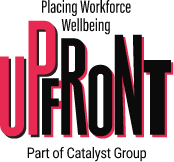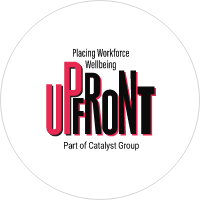The apparel and textile industry is at a crossroads. As the world grapples with environmental challenges, the industry must transition from its current linear model of production—where resources are extracted, used, and discarded—to a circular economy that prioritises sustainability, waste reduction, and resource efficiency. Embracing circular practices is not just an environmental imperative but also a pathway to long-term economic resilience and innovation in the future of the apparel and textile industry.
A circular economy in apparel goes beyond recycling; it involves designing out waste, keeping materials in use for as long as possible, and regenerating natural systems. It also includes empowering the workforce through initiatives like training programs for apparel factory workers and sustainable business practices that foster inclusivity and innovation.
Understanding the Linear Model and Its Impact
The traditional linear model of the apparel industry is resource-intensive and wasteful. It relies on the extraction of finite raw materials, mass production, and the disposal of products after minimal use. This approach has far-reaching environmental and social consequences, including:
- Resource Depletion:
The production of textiles like cotton and polyester requires significant water, energy, and land, straining natural resources.
- Waste Generation:
Millions of tonnes of clothing end up in landfills each year, with synthetic materials taking decades or even centuries to decompose.
- Carbon Emissions:
The apparel and textile industry contributes significantly to global greenhouse gas emissions due to energy-intensive manufacturing and transportation processes.
- Social Inequities:
The linear model often relies on underpaid labour, overlooking the need to empower factory workers in the apparel industry and provide fair working conditions.
The Circular Economy: A New Vision for Apparel
The circular economy offers a transformative approach to rethinking how clothes are designed, manufactured, and consumed. Key principles of a circular economy in the apparel industry include:
- Design for Longevity:
Creating durable, high-quality garments that can be reused, repaired, or repurposed reduces the need for new production.
- Closing the Loop:
Systems for collecting and recycling old garments into new products minimise waste and keep materials in circulation.
- Sustainable Materials:
Using renewable, biodegradable, or recycled materials reduces the environmental impact of production.
- Collaborative Consumption Models:
Initiatives like clothing rental, resale platforms, and swapping encourage shared use of garments, extending their lifecycle.
- Empowering the Workforce:
Incorporating training programs for apparel factory workers ensures that employees are equipped with the skills needed to implement sustainable practices.
The Role of Innovation in the Future of the Apparel and Textile Industry
Innovation is at the heart of the transition to a circular economy. From material science to digital platforms, new technologies are driving sustainable change in the future of the apparel and textile industry:
- Biodegradable and Regenerative Fabrics:
Advances in materials, such as algae-based textiles and compostable fabrics, reduce reliance on non-renewable resources.
- Recycling Technologies:
Cutting-edge recycling processes can break down textiles into their raw components, enabling the creation of new fibres from old garments.
- Digital Design Tools:
AI and 3D design technologies optimise material use and reduce waste during the prototyping phase.
- Blockchain for Transparency:
Blockchain technology tracks the lifecycle of garments, ensuring transparency in sourcing, manufacturing, and recycling.
Empowering Factory Workers in the Apparel Industry
Transitioning to a circular economy is impossible without the participation and empowerment of workers. Factories are the heart of the apparel production process, and sustainable transformation requires investment in people. Empowering factory workers in the apparel industry involves:
- Providing Education and Training:
Workers need access to training programs for apparel factory workers to understand circular practices, such as textile recycling, waste reduction, and energy-efficient manufacturing.
- Fair Wages and Working Conditions:
A sustainable future must prioritise ethical labour practices, ensuring workers are fairly compensated and operate in safe environments.
- Fostering Collaboration:
Encouraging dialogue between management and workers ensures that sustainability goals are aligned with employee needs and aspirations.
- Promoting Leadership Opportunities:
Empowering workers to take on leadership roles fosters innovation and accountability within the workforce.
Key Strategies for Implementing a Circular Economy
Transitioning to a circular economy requires coordinated efforts across the apparel value chain. Here are key strategies:
- Designing Sustainable Products:
Designers must prioritise modular and repairable garments made from renewable or recycled materials.
- Optimising Manufacturing Processes:
Factories should adopt practices like zero-waste cutting techniques and energy-efficient technologies to reduce their environmental footprint.
- Creating Reverse Supply Chains:
Establishing systems for garment collection, sorting, and recycling helps close the loop and prevent textiles from ending up in landfills.
- Engaging Consumers:
Brands must educate consumers about sustainable fashion choices, such as caring for clothes to extend their lifespan or participating in take-back programs.
- Collaboration Across Stakeholders:
Governments, NGOs, and private enterprises must work together to create policies, incentives, and infrastructure that support circular practices.
Challenges to Circularity in the Apparel Industry
While the benefits of a circular economy are clear, significant challenges remain:
- High Initial Costs:
Implementing new technologies and systems requires upfront investment, which may deter smaller businesses.
- Consumer Behaviour:
Fast fashion’s emphasis on low-cost, disposable clothing creates resistance to sustainable consumption models.
- Complex Supply Chains:
The global nature of apparel production complicates efforts to ensure transparency and accountability.
- Lack of Skilled Workforce:
Many factories lack the expertise required to implement circular practices, underscoring the importance of training programs for apparel factory workers.
The Broader Impact of Circular Economy Practices
Adopting circular practices benefits not only the environment but also the economy and society:
- Environmental Impact:
Reducing waste and emissions helps mitigate climate change and preserve natural resources for future generations.
- Economic Opportunities:
Circular models create new business opportunities, from recycling technologies to rental and resale platforms.
- Social Equity:
Empowering workers and ensuring ethical practices contribute to fairer, more inclusive supply chains.
- Consumer Awareness:
Encouraging sustainable choices shifts the cultural narrative around fashion, prioritising quality and longevity over disposability.
Steps Toward a Circular Future
Achieving a circular economy in the apparel industry requires actionable steps, including:
- Setting Clear Goals:
Companies should define measurable sustainability targets aligned with circular principles.
- Investing in Innovation:
Supporting research and development in materials, processes, and technologies drives continuous improvement.
- Building Partnerships:
Collaboration between brands, governments, and NGOs accelerates the adoption of circular practices.
- Empowering the Workforce:
Providing workers with training and fair working conditions ensures their active participation in the transition.
The future of the apparel and textile industry lies in its ability to embrace sustainability and adopt circular economy principles. From reducing waste and emissions to empowering workers and fostering innovation, the transition to a circular model represents an opportunity for the industry to redefine its impact on the planet and society.
By prioritising training programs for apparel factory workers and empowering factory workers in the apparel industry, businesses can ensure that their workforce is prepared to lead this transformation. A circular economy is not just a vision for a sustainable future—it’s a necessity for a thriving, resilient industry that balances profit with purpose.


